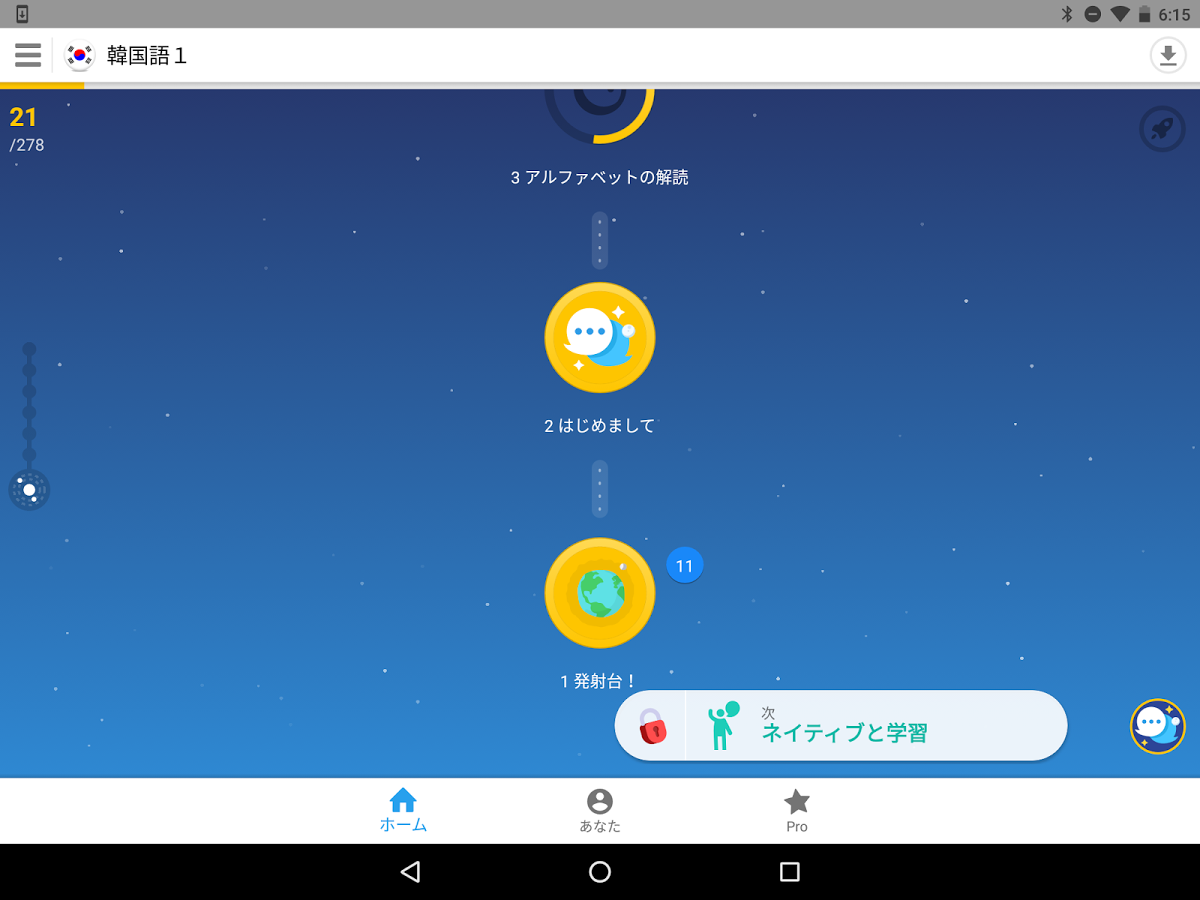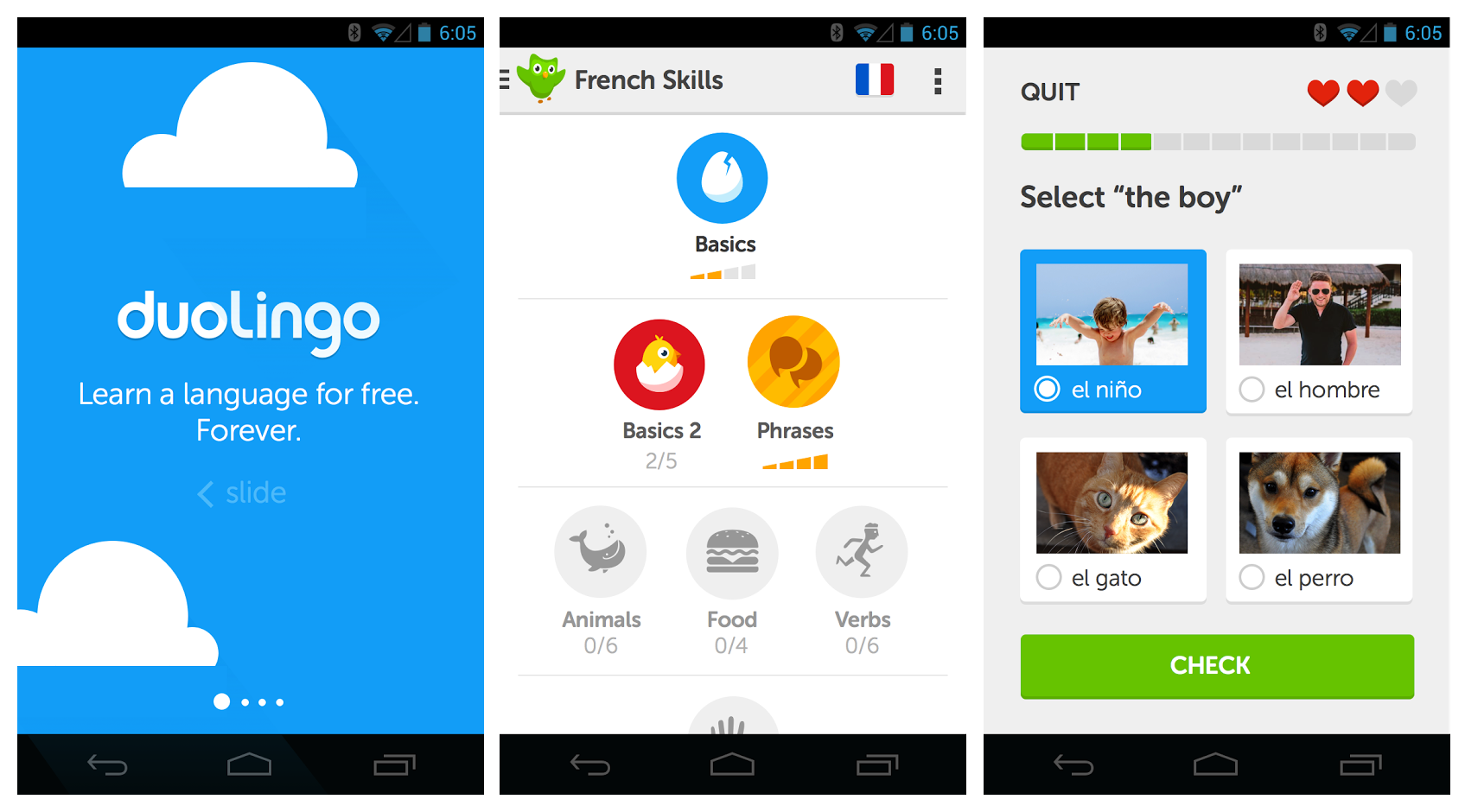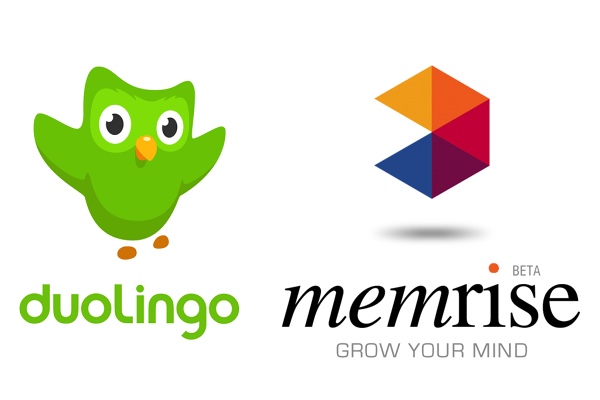Do you want to learn a language quickly and you’re curious to try smartphone or tablet apps that can help you succeed? Then you have certainly heard of the two leading members, Duolingo and Memrise. Both services allow you to learn a vast catalog of languages, make you choose between free and paid plans and work on both iOS and Android. How to choose the right app for you? We’ll explain some details about both Duolingo and Memrise, after testing them for a while.
Memrise
Memrise allows you to learn more than 100 languages, including Chinese and Japanese, in addition to sign languages and different regional languages (such as Mandarin or Tamil). The interesting aspect of Memrise is the particular approach to the new language: it’s all about teaching complete sentences and new words. It does not focus on grammar exercises but lets you deduce rules from examples. The tests included in each unit are crucial: they allow you to memorize better what you’ve learned.
These tests let us listen to the word/phrase many times in a row, forcing us to use it several times to memorize it better and then learn how to create sentences based on what we have already studied. Videos and learning cards reveal us little tricks to remember better and faster. Some natives pronounce the phrases and the words we are learning. Each course is divided into modules and then into steps to learn, listen, and test what we just learned. Memrise basic features are free for everyone, but for a better user experience you can purchase the Pro version: the offline mode is included such as the Quick Review feature, hints, and native speaking videos.
Memrise Pro cost is 8.99$ per month, but you can find discounted packages.

Duolingo
Duolingo now allows you to learn 23 languages.. Of course, all the most important and common ones are included. Courses, however, are not available in all native languages: for example, it is impossible to learn Portuguese from German, you need to learn it from English.
During account setup, it’s possible to set a goal to reach, with a maximum commitment of half an hour of study per day. The learning system used in this case is the progressive one based on topics: as you learn new words, phrases, and foods, you move forward by difficulty. The final part is the training. To complete a unit, all the lessons and final tests must be finished. Lessons offer a mixed teaching system: translation of sentences into the language we are learning from or into our language, multiple choice answers, listening and so on. The app focuses heavily on learning new words and translating sentences, which you also have to pronounce correctly. Grammar is often ignored and can not easily be deduced from the learned examples.
Additionally, at the end of each lesson, we have to deal with a lot of advertising because Duolingo is free. If we want to eliminate advertising, we can choose Duolingo Plus at $ 9.99 per month, actually only for Android users while the iOS version is coming.

Duolingo or Memrise: which one to choose?
We tested both apps, we have appreciated both. Each has some peculiar aspects that can help you choose and can be summarized as follows:
- do you have to learn a language that is not common, a regional or an Asian or a very particular language? Choose Memrise.
- Do you want to use only a free service? You can download both and decide which one you like most.
- Do you need to review a language or do you have to speak it during a journey, and you don’t mind about the grammar? Both are good, but Duolingo can be enough.
- Are you interested in learning offline? You can choose if you like more the Memrise Pro or Duolingo Plus interface.
- If you want to learn Klingon, wait for Duolingo to make it available.
After performing in-depth tests, based on teaching method, offering features and interface, we prefer Memrise Pro to the competitor Duolingo Plus.


NOPE that’s wrong i think Duolingo is way better and has a better technique when it come to